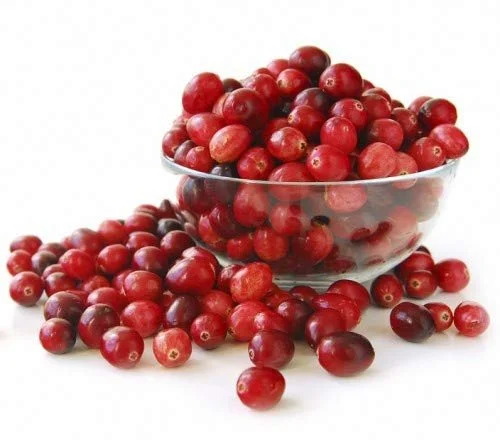Farmer's Market Online® Guide to Cranberries
Cranberries are typically in season in the fall, specifically from September to November in the northern hemisphere. The exact timing of the cranberry harvest can vary depending on the region and climate conditions. In North America, where cranberries are commonly grown, the peak harvest season often occurs in October.
Cranberries are unique in that they are typically harvested by flooding the cranberry fields, making it easier to collect the ripe berries, which float to the surface. After the harvest, cranberries are processed and used in various culinary applications, such as sauces, juices, baked goods, and other dishes.
Cranberries are also available in frozen or dried forms throughout the year.
Nutrition
Also called bounceberries and craneberries, cranberries are a good source of vitamin C, and they contain substances called proanthocyanidins. Research suggests that these substances promote urinary tract health by preventing bacteria from sticking to the urinary tract.
Selecting
Selecting
Cranberries grow on low trailing vines in bogs. Today, most cranberries harvested in the U.S. are from Massachusetts, Wisconsin, Washington, and Oregon.
Choose cranberries that are shiny and plump. The color should range from light rosy red to deep scarlet. Avoid berries that are shriveled, soft, or have brown spots. Tightly wrapped cranberries can be refrigerated for up two months. Discard any soft berries if you plan to store them for more than a few days.
Storing and Preserving
Toss bagged cranberries in the freezer and use within a year. Washing them before freezing will cause them to spoil.
Preparing
Because cranberries are so tart, they require generous amounts of sugar when cooking. Most cranberry sauce recipes call for 1 cup sugar per 12-ounce bag of cranberries.
Recipes
Cranberry Sauce

